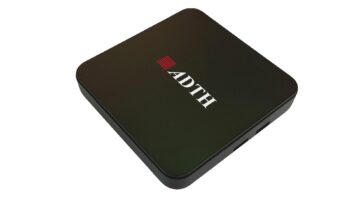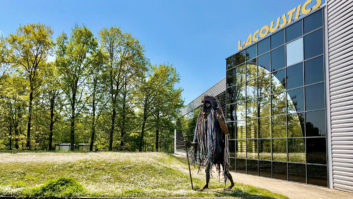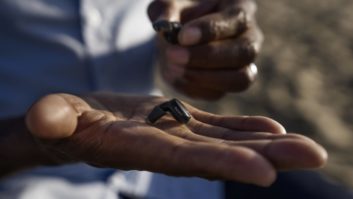Washington — The first round of house Telecommunications Subcommittee discussions on establishing new national digital television policy pitted broadcasters against a handful of other interested parties in a battle to establish a firm analog television cutoff date.
The almost day-long session covered a staff discussion draft of the Digital Television Transition Act of 2005, which includes, among other things, a proposal to have analog television broadcast spectrum returned to the government by Dec. 31, 2008.
The government would then have the ability to reallocate portions of the 700MHz spectrum to emergency services needs, before putting the bulk out to auction for various wireless communications services.
Proceeds from the auction would be applied to the federal deficit. For that reason, the House Energy and Commerce Committee chairman, Rep. Joe Barton House (R-Texas), has proposed linking passage of the act to this year’s budget approval, a process to which several committee members objected, for rushing the process through.
Most of the committee members attending the session seemed to support the call for establishing a hard cutoff date, although several suggested the date should be pushed up to the original Jan. 1, 2007, deadline. Many committee members also called for inclusion of a subsidy program to compensate consumers who rely on over-the-air analog broadcasting for the all or a portion of the cost of digital-to-analog converter equipment.
Most members calling for the subsidy provision would have it cover low-income households determined by a means test, although several members, including Rep. Rick Boucher (D-Va.), said the subsidy should be allocated to every home that would be affected by the loss of analog signals, regardless of income.
Others argued that there was no need for a subsidy of any kind, if consumers were given enough advance warning, to prepare.
In oral testimony, Jim Yager, Barrington Broadcasting’s CEO, said broadcasters are ready for the digital TV transition.
“Let me be very clear. All broadcasters — large and small — want to see the DTV transition brought to a successful close,” he said.
But Yager added that the current draft language would place a hardship on the 21 million viewers who continue to receive over-the-air TV, according to his data. Many of those homes have low-incomes, he said.
“Under the draft’s hard date, viewers will either lose their television service or have to pay for converter boxes, or even worse subscribe to pay TV, all just to keep something they currently get for free,” he said.
Gary Shapiro, CEA’s president, said his association “unequivocally endorses the staff draft’s establishment of Dec. 31, 2008, for the recovery of the analog spectrum. The setting of a date-certain will benefit consumers as spectrum is reallocated for purposes ranging from public safety communications to exciting new services such as wireless networking and Internet access.”
Shapiro, who told the committee his association would have no problem with a subsidy program for conversion equipment, added that the analog cutoff “will have little practical impact on the viewing habits of the vast majority of Americans.”
Shapiro told the committee members that CEA does not support a provision in the draft that would accelerate the Federal Communications Commission’s (FCC’s) digital television tuner mandate for 13-inch to 24-inch televisions, from July 1, 2007, to July 1, 2006.
“We are concerned that, if implemented, such a requirement would severely reduce the retail market for these sets,” Shapiro said in written testimony presented to the subcommittee. “Manufacturers need a minimum of 18 to 24 months to plan, develop and deploy new equipment.”
He added that imposing a July 1, 2006, deadline could force some manufacturers to remove all tuners from the affected sets or drop the screen sizes from their model offerings.
Other consequences could be forced cost increases that the marketplace cannot sustain, resulting in a decrease in the number of DTV tuners in the marketplace.
“By contrast, the current and anticipated July 2007 date allows time for economies of scale to fully develop. This will lessen the sticker shock for consumers, allowing these products a chance to compete against less expensive, tuner-less alternatives,” Shapiro said.
In regard to a draft proposal to require analog televisions to be labeled with a warning about the need for a set-top DTV tuner/converter box to receive over-the-air broadcasts after the transition date, Shapiro said CEA supports educational labels on analog televisions “when paired with the certainty of a hard date.”
He added that manufacturers “will need a minimum 120 days to include the labels or label text on the outside of the product packaging and on or near the television itself.”
Alan McCullough, Circuit City’s CEO, echoed Shapiro’s statements.
“I believe setting a transition date will result in a very substantial, though possibly short-lived, market for converter boxes that receive a digital signal from an antenna and deliver a standard analog broadcast type signal to good old channel three or four,” McCullough said. “Setting a hard date will strand some customers who are on analog broadcasting now, and we have no objection in principle to the government subsidizing the purchase of products that receive digital broadcasts or even simply giving away converter boxes … All we ask is that you avoid solutions that seem to look good on paper but don’t get the real-world test.”
McCullough pointed to the current Federal Communications Commission digital tuner mandate with phase-in requirements as “more of a paper solution than a real one.”
“When you try to mandate supply and demand in this way, you always get unintended, typically bad consequences.”
He said the phase-in requirement has led to a supply imbalance due to customers opting for less expensive televisions that lack digital tuners, because many homes don’t require the digital tuners to be built into their sets.
Additionally, McCullough said that advancing the 100 percent DTV tuner compliance date to July 2006 for 13-inch and larger color TV sets, as outlined in the draft discussion, would hurt people who can’t afford to pay more for such sets the most.
In written testimony to the subcommittee 3G Americas, a trade organization supporting the wireless industry throughout the Americas, strongly supported the committee’s proposed analog broadcast cutoff date, in order to free “spectrum for public safety and advanced wireless uses.”
The group said that the current 85 percent DTV penetration provision will take longer than Dec. 31, 2006, timetable.
“In the interim, public safety operators have been denied needed spectrum and the American public has been denied the benefits of innovative broadband wireless services,” 3G Americas said.
Chris Pearson, president of 3G Americas, stated, “The additional spectrum made available because of this firm date will enhance public safety capabilities, as well as fuel opportunities for more innovative and advanced wireless services and applications.”













